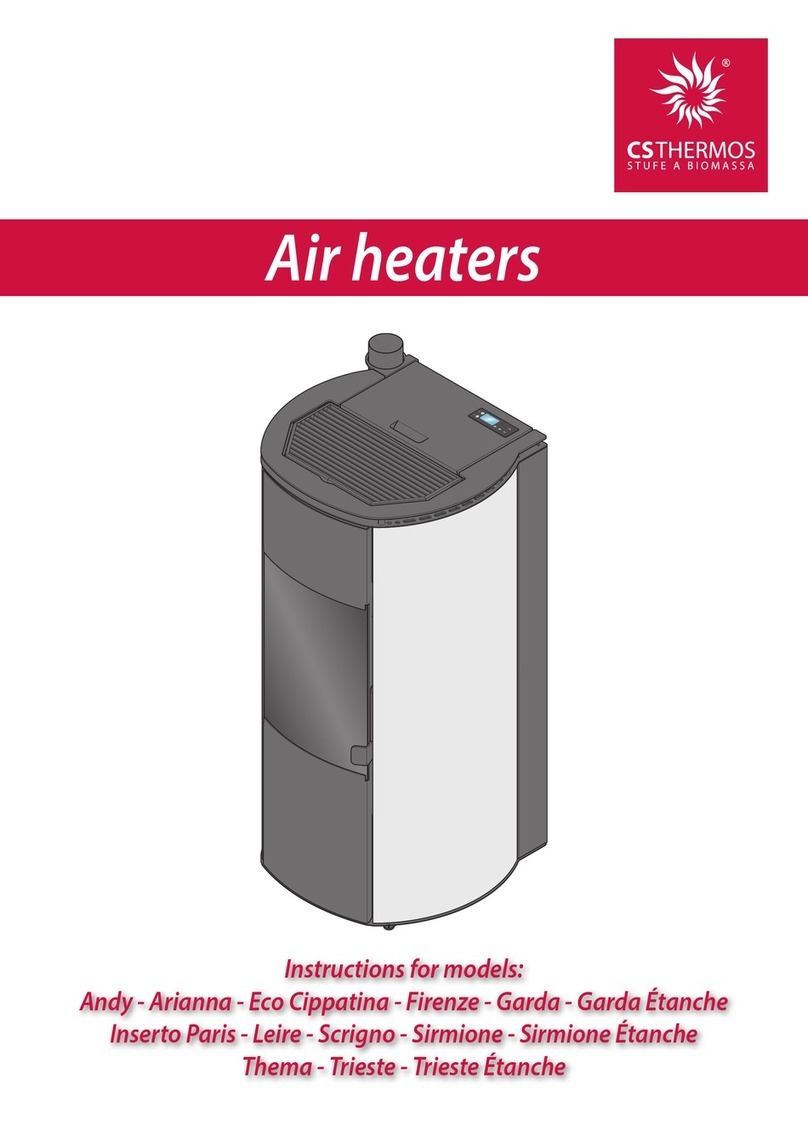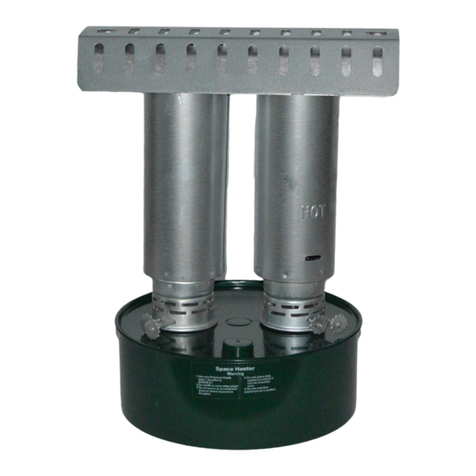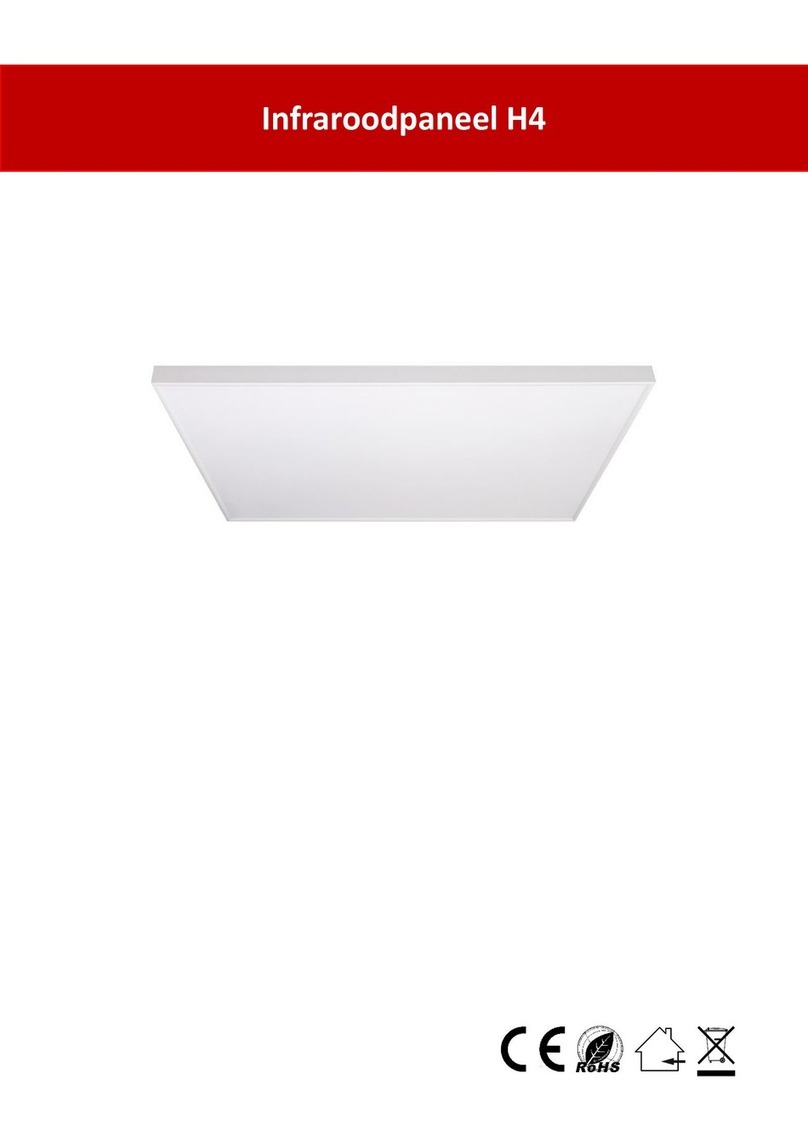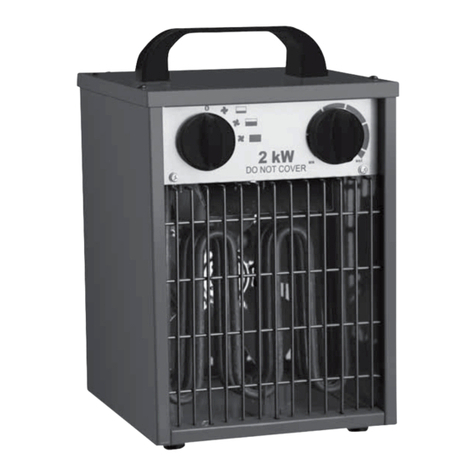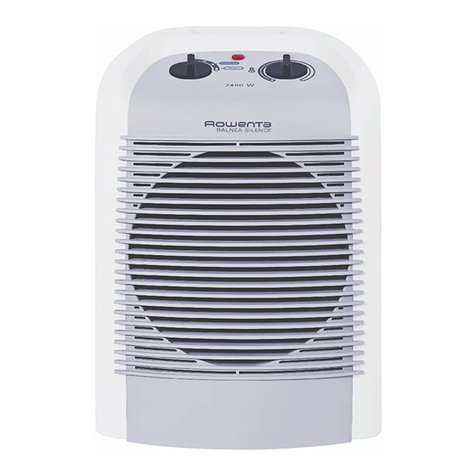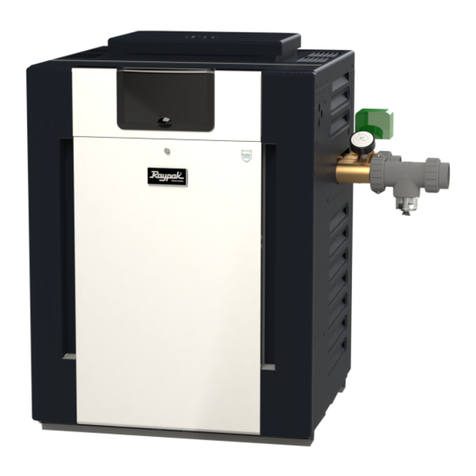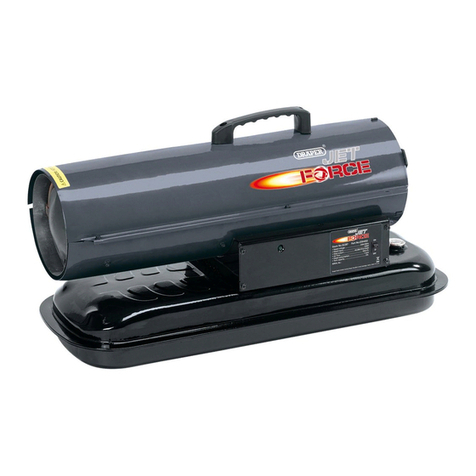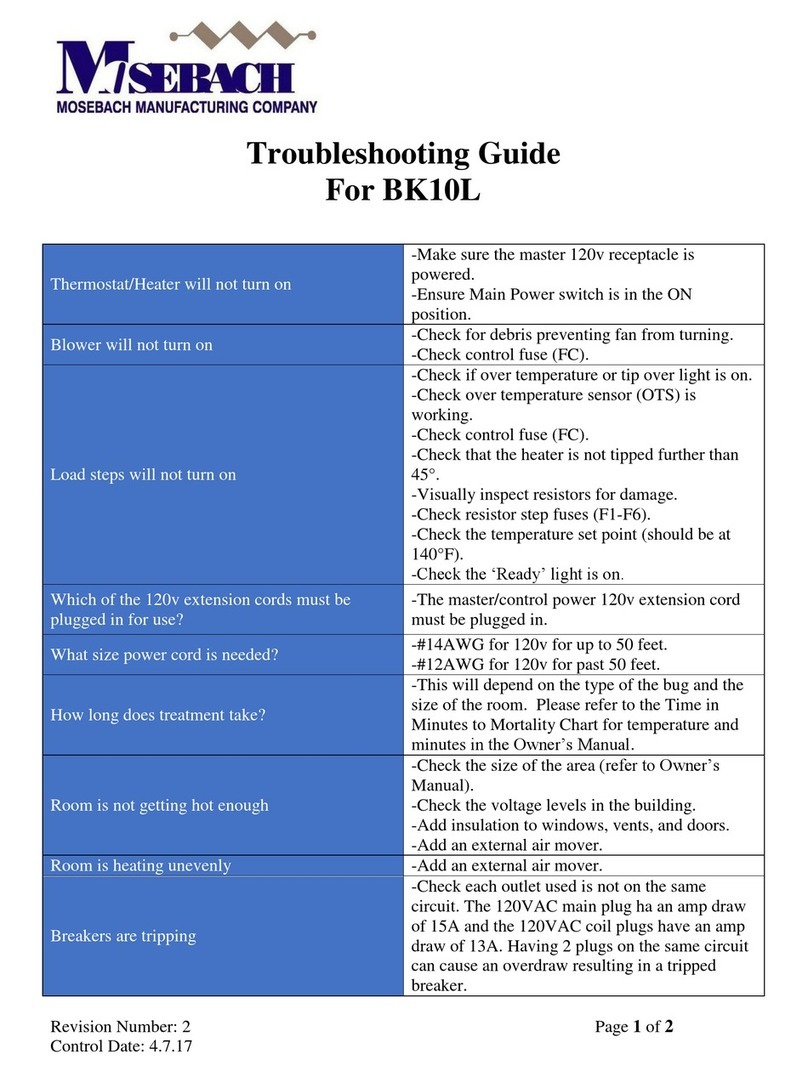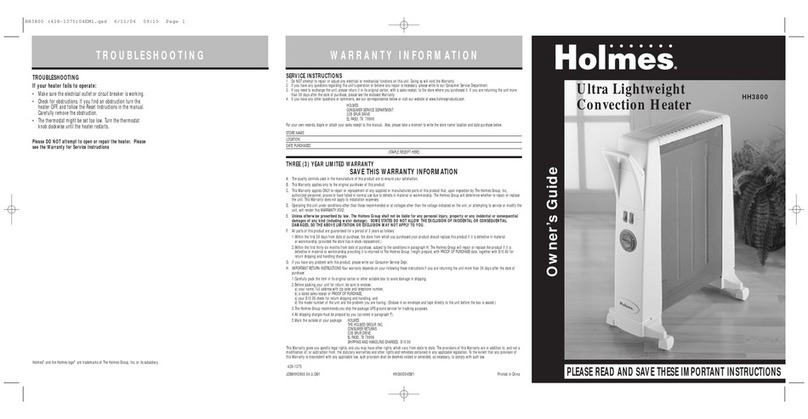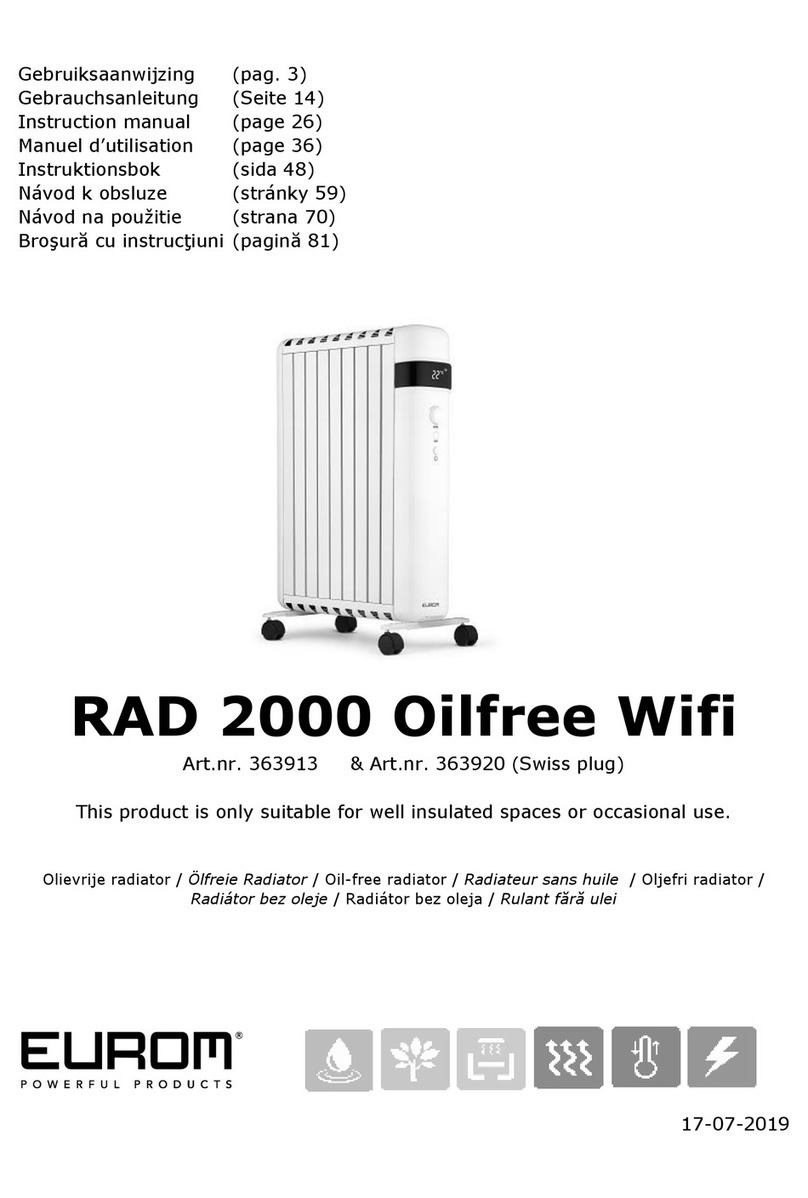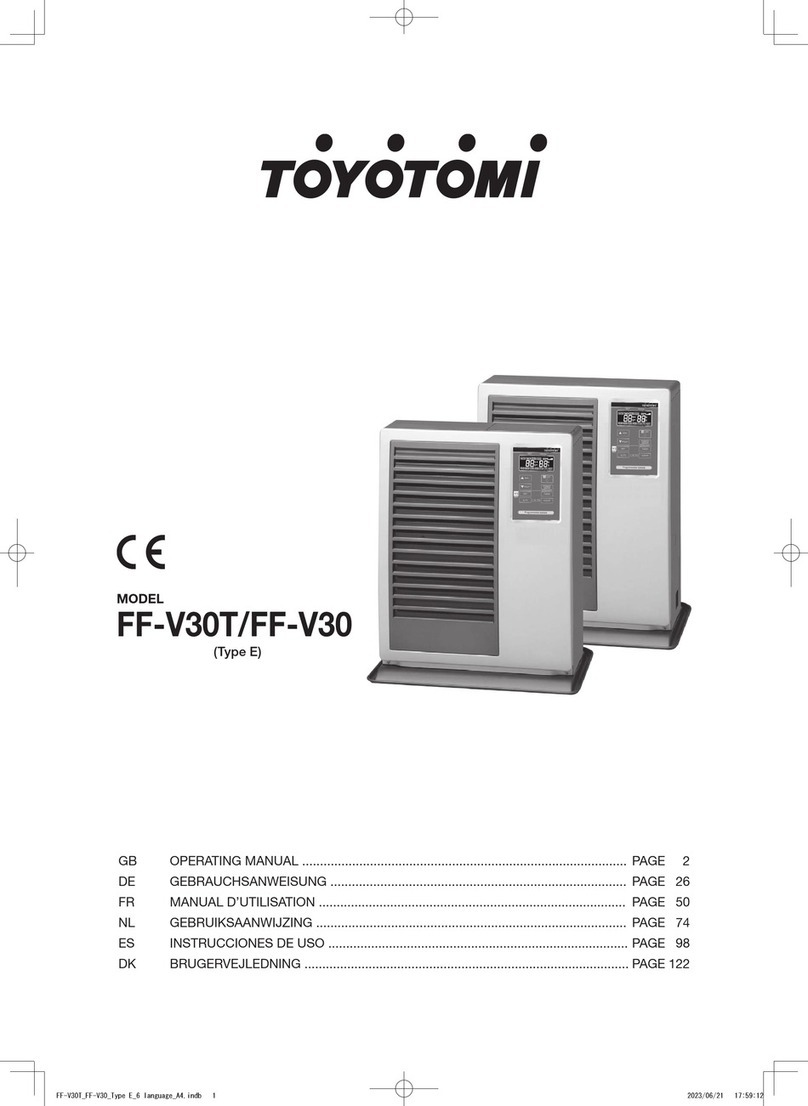CS THERMOS Arianna Series User manual

Air heaters
Instructions for models:
Arianna - Cortina - Garda - Sirmione

2code 6118250 iss. 10-2018
Dear Customer,
We wish to thank you for choosing a CSTHERMOS stove and welcome you into our pellet/biomass/sized chip
heating world.
We remind you that our products are manufactured wholly in Italy with superb quality materials and are accurately
tested in compliance with the provisions of the safety regulations in force.
Great innovation and sophisticated design are added to this guarantee of quality and comfort.
These stove models can be tted with a traditional type pellet boiler that would use only best quality wood pellets
complying with the ISO EN 17225-2 reference standards and their updates, or with an innovative and patented
biomass boiler capable of burning not only any kind of wood pellets (for instance consisting of bark and branches)
but also biomass from agricultural waste such as maize, grapeseed, almond-walnut-hazelnut-pine nut shells, olive
stones, vine runners, etc.
An automatic cleaning system is managed by an electronic board that keeps the burner always clean, obtaining
great eciency and reliability of use.The modulating operation varies according to the set ambient temperature and
therefore allows optimal room heating. During the initial ignition phase (about 10 minutes), the burner automatically
lls with fuel, while resistors, heating up, trigger the ame. Once the ame has been detected by the combustion
fume detector, normal operation begins that, thanks to the microprocessor, allows changing the supply of fuel,
obtaining therefore ame modulation.
The electronic board checks the temperature sensors, electrical motors and safety devices continuously and, in
case of an anomaly, stops their operation and shows this on the display (see alarm code paragraph). The heating
of the environment is guaranteed by an air ow that varies according to the operating power going through the
combustion smoke pipes.
Models with biomass burner: do not exceed 60% corn in the mixture with the wooden pellets. Other chopped
fuels (i.e.: olive stones, shells, etc.) can be used "unmixed" with the wooden pellets, but they must have a minimum
diameter of 4mm.

3
code 6118250 iss. 10-2018
CONTENTS
Page
1 Safety regulations 4
2 Models of stove dealt with in this manual.................................................................................................8
3 Receiving the equipment ........................................................................................................................................................... 9
4 Transport and handling..............................................................................................................................................................10
5 Description of the parts.............................................................................................................................................................. 12
5.1 Arianna, Cortina, Garda, Sirmione stoves...................................................................................................................12
5.2 Stove dimensions................................................................................................................................................................14
5.3 Pellet container ....................................................................................................................................................................16
5.4 Stove serial plate ................................................................................................................................................................. 17
6 Stove technical data.....................................................................................................................................................................18
7 Fuels 20
7.1 Setting the fuel ....................................................................................................................................................................20
8 Installation........................................................................................................................................................................................21
8.1 Pre-installation .....................................................................................................................................................................21
8.2 Flue pipe 22
8.3 Electrical arrangement......................................................................................................................................................26
8.4 Unpacking ................................................................................................................................................................................. 27
8.5 Setting up the stove........................................................................................................................................................... 28
8.6 Connecting the ue through the stove rear outlet.................................................................................................29
8.7 Connecting the ue on the side of the stove............................................................................................................29
8.8 Combustion air inlet ..........................................................................................................................................................31
8.9 Minimum distance to position the air inlet ...............................................................................................................31
8.10 Air ducting in Garda 8, Cortina 8, Sirmione 8 models............................................................................................32
8.11 Electrical connections........................................................................................................................................................34
8.12 Electronic board...................................................................................................................................................................35
9 Use ....................................................................................................................................................................................................36
9.1 Display.....................................................................................................................................................................................36
9.2 Commissioning ...................................................................................................................................................................37
9.3 Programming ......................................................................................................................................................................38
9.4 Operation phases ...............................................................................................................................................................40
9.5 Alarm code list......................................................................................................................................................................41
10 Cleaning ............................................................................................................................................................................................ 42
10.1 Cleaning the outside.......................................................................................................................................................... 42
10.2 Cleaning the biomass burner 43
10.3 Cleaning the combustion chamber 45
10.4 Emptying and cleaning the ash collector ..................................................................................................................46
10.5 Cleaning and maintenance of other parts 47
11 Disposal.............................................................................................................................................................................................48
12 Notes....................................................................................................................................................................................................49

4code 6118250 iss. 10-2018
Safety regulations for the user
This manual is an integral part of the product: it is important to read it in all its parts before
installing or using the equipment. Ensure it is always available, also in case of a move/sale/
transfer to another owner, so that it can be consulted by the new user, installer or by any
authorized sta.
Any use, cleaning or maintenance other than as stated in this booklet must be considered
incorrect and may cause damage, injury or death, making the guarantee null and void and
releasing the Manufacturer from any liability.
Extraordinary maintenance must be carried out only by qualied personnel authorized
by the Dealer or Manufacturer.
This pictogram refers to a situation of immediate danger or a dangerous situation that might
cause injury or death.
This pictogram shows that it is necessary to behave in such a way as not to endanger the
safety of sta or cause damage to the equipment.
This pictogram hints at important technical information that must be taken into account by
the installer or user of the equipment.
Danger of burns
Danger of electric shock
Danger of crushing your hands
Danger of asphyxia
Fire hazard
Danger of crushing your feet
Obligation to use protection gloves
1 - SAFETY REGULATIONS

5
code 6118250 iss. 10-2018
Safety or equipment automatic adjustment devices must be modied only by the
manufacturer or by an authorized service centre or supplier, during the whole life of the
system.
If the equipment is not to be used for a long time, switch o the main power switch.
If the equipment does not work or you notice functional or structural changes, disconnect
it from the power mains and contact a service centre authorized by the Manufacturer or
Dealer without attempting any DIY. As to repairs, always ask for original spare parts to be
used, in order to avoid problems and invalidating the warranty.
Any kind of tampering or replacement carried out by non-qualied personnel can be
dangerous for the user and releases the Manufacturer from all civil and criminal liability.
Ensure the room where the unit is going to be installed is suitable and provided with air
vents with minimum openings in compliance with the legislation of the country of destina-
tion and anyway sucient to obtain perfect combustion.
When the unit is delivered, check it is intact because vibrations or impacts during transport
might have loosened some components. Check the housing or the parts making up the
equipment have not been damaged. If this is the case, inform the installer and/or our
customer service.
Do not leave any ammable containers or substances next to the stove, comply with the
safety distances mentioned in the manual.
Before connecting the equipment to the mains, always check the system data match those
on the equipment plate.
Use only the fuel recommended by the Manufacturer. The product must not be used as an
incinerator. It is absolutely forbidden to use liquid fuels.
Do not load the pellets into the burner manually.
The unit cannot be used by children or people with limited physical, sensory or mental
capabilities or without the necessary knowledge and experience. Children must not play
with the apparatus.
Non-compliance with these instructions can cause damages, injuries and even death and
invalidates the warranty.
Since potentially dangerous, any packaging material must be kept out of the reach of
children or animals and disposed of in compliance with local regulations.
Connect the earth cables of the equipment to the earth system of the building where it is
installed.
The data plate supplies important technical information that is vital in case of a request for
maintenance or repair of the equipment: please do not remove, damage or modify it.
Do not open the burner while it is running.
Do not operate the unit with the glass broken.

6code 6118250 iss. 10-2018
Do not disconnect it by unplugging it when there is a ame on in the burner.
Do not use the unit to cook food or heat drinks.
Do not use the product as a supporting structure or as a ladder.
To prevent res, do not hang wet clothes on the unit to dry them, drying racks can be
positioned at a safe distance.
Do not wash the product with water jets. Water may penetrate into the unit and cause
electric shocks.
If the ignition system fails, it is absolutely forbidden to use ammable materials to light the
ame.
Disconnect the electrical supply before any maintenance or cleaning.
To ensure the equipment is in perfect use and safety conditions, we recommend that it is
maintained and checked by a Service Centre authorized by the Manufacturer or Dealer at
least once a year.
Some small tongues of re can appear on the sides of the burner, this is normal since the
gases in contact with the hot parts are burnt o.
A minimum natural draught of 6-8 Pa in the ue pipe must always be guaranteed to prevent
the sudden lack of voltage or adverse environmental conditions from letting smoke out into
the room, making electrical components overheat (see UNI 10683 standard).
Draught conditions unsuitable to the ue, excessive fuel humidity or high ash residue in
the combustion chamber, can cause IGNITION FAILURES THAT MUST NOT BE CONSIDERED A
FAULT IN THE PRODUCT.
In case of failed ignition, clean the crucible before trying to start the stove again.
The product warranty starts on the date when the equipment is switched on for the
rst time by an authorized engineer (dealer or CAT).
Further risks
The stove has been conceived, designed and built taking all the applicable Safety
Regulations currently in force in the country of manufacture into account. Even if all
possible precautions to comply with the Regulations currently in force have been taken,
the following risks can still apply:
Risk of BURNS in accessing the inspection and cleaning doors with the ame still on or not
completely cooled down.
Risk of ELECTRICAL SHOCK. For a correct electrical connection as well as safe protection,
the thermo-stove must be connected to a thermal dierential with a trigger threshold not
exceeding 30 mA, in compliance with the regulations in force.
Risk of HAND INJURY during the opening and cleaning operations and/or maintenance
of the supply auger, burner and ash drawer. We recommend suitable Personal Protection
Equipment (PPE), such as gloves, is used. When disassembling some parts of the equipment
and then reassembling them, pay attention to the risk of crushing your hands.

7
code 6118250 iss. 10-2018
Risk of ASPHYXIA if there is no correct fume expulsion. We advise you to periodically
inspect and keep the ue and re outlets clean.
Risk of FIRE if ammable objects are placed on the surface of the unit or if solid or liquid
ammable materials are positioned near it.
Draught conditions unsuitable to the ue, excessive fuel humidity or high ash residue in the
combustion chamber, can cause ignition failures that must not be considered a fault in the
product.
The company accepts no liability for any damages that may derive, either directly
or indirectly, to people, animals or property due to the non-compliance with all the
provisions listed in this manual and, in particular, concerning the warnings with regard
to the installation, use and maintenance of the apparatus.

8code 6118250 iss. 10-2018
2 - STOVE MODELS DEALT WITH IN THIS MANUAL
Arianna
10/12
Cortina
9/10
Sirmione
9/10/12
Garda
9

9
code 6118250 iss. 10-2018
3 - RECEIVING THE EQUIPMENT
When you receive the equipment, check its packaging is intact. In case of visible damage or if some pieces
are missing, do not install it, but contact the Manufacturer straight away.
If no anomaly is found, the product can be installed.
Handle the equipment following the Manufacturer's instructions shown on the packaging and in this
manual. Use personal protection equipment all the time.
The means and method of transport must be chosen by the person responsible for handling, according
to the equipment weight and size. Handling must guarantee the safety of the people directly involved in
the installation.
CSTHERMOS

10 code 6118250 iss. 10-2018
4 - TRANSPORT AND HANDLING
The apparatus must be lifted with a winch tted with a hook (A) and handled with a transpallet or forklift
truck of suitable capacity.
The area of movement must be free from objects or people not involved in the transport operation.
If the equipment is handled using a winch, it is necessary to use some spreader bars (C) between the
lifting ropes, to prevent the unit from being damaged and ensure no excessive pressure is applied to the
packaging or machine itself.
Lifting with a winch tted with a hook
Use hooks of capacity and material suitable to the weight to be lifted. Ensure the safety lock (D) is in the
correct position while lifting.
Do NOT move the equipment if the eld of vision is
poor or if there other other obstacles along the way (i.e.
electrical cables, lintels, etc.). The range of action of the
lifting equipment must be kept free from people when
the loads are lifted.
Shifting must always be vertical. Use steel hooks, chains
or cables in perfect condition, of a suitable material and
capacity and without any joints or extensions (E). Carry
out periodic checks to guarantee eciency.
To anchor the unit, pass the ropes or chains through
the pallet holes (B), paying attention it is kept perfectly
level.
Check the atness of the ground where the lifting
equipment is standing, making sure it is stable and not
prone to subsidence.
Do not move the lifting equipment during the
operation.
Before starting lifting, check correct anchoring to the
mentioned points and the centre of gravity, then slowly
lift the packaged equipment to the minimum height
required and move it carefully to avoid dangerous vibrations.
Take care of the control panel that must undergo no impacts or be exposed to the weather (rain,
humidity): any damage may aect its operation.
Avoid sudden stops of the lifting or descending movement, in order to avoid dangerous oscillations.
A
C
OK!
B
OK!
OK!
D
E

11
code 6118250 iss. 10-2018
Lifting with a transpallet or forklift truck
If the transport is done using a transpallet, ensure it is adequate to the weight and size of the packaged
equipment. Insert the forks into the points provided for handling (usually in the central position), to keep
the centre of gravity of the load balanced. Move the equipment carefully, avoiding sudden movements.
If the transport is done with a forklift truck, ensure this is strong enough to withstand the weight of the
equipment and that this can be moved safely, without any risk of it falling.
Transport with a van
If transport is done using a van, the apparatus must be xed properly inside it, using ropes, so that it
cannot move while handling.
OK!
OK!

12 code 6118250 iss. 10-2018
5 - DESCRIPTION OF THE PARTS
Description
1) Container lid
2) Display
3) Technical data label
4) Top discharge arrangement
5) Burner
6) Ash drawer
7) Explosion relief
8) Hearth door
9) Glass cleaning air adjuster
5.1 Arianna, Cortina, Garda, Sirmione stoves
1
23
4
5
6
7
9
8
1
23
4
5
6
7
9
8
1
23
4
5
6
7
9
8
1
23
4
5
6
7
9
8
Arianna
10/12
Cortina
9/10
Garda
9
Sirmione
9/10/12

13
code 6118250 iss. 10-2018
Description
10) Auger thermostat
11) Electrical outlet
12) Boiler thermostat
13) Flue gas discharge
14) Duct arrangement
10
13
14
13
12
11
12
11
13
13
10
10
11
13
14
13
12
10
13
13
12
11
10
13
14
13
12
11
12
11
13
13
10
Arianna 10/12 Cortina 9 Cortina 10
Garda 9
Sirmione 9 Sirmione 10/12

14 code 6118250 iss. 10-2018
5.2 Stove dimensions
560
570
1200
180
235
215
135
255
455
4
3
1
2
130
250
180
235
450
210
1210
560
590
4
4
1
3
2
4
4
1
3
235
590
480
185
285
355
500
560
195
305
234
336
1080
4
4
1
3
Arianna 10/12 Cortina 9
Cortina 10/12 Garda 9
1
2
3
4
Flue gas discharge
Duct arrangement
External air intake
Hot air outlet

15
code 6118250 iss. 10-2018
550
470
1090
230
185
295
335
4
4
1
3
1210
180
235
450
210130
250
550
560
4
4
1
2
3
Sirmione 9 Sirmione 10/12
1
2
3
4
Flue gas discharge
Duct arrangement
External air intake
Hot air outlet

16 code 6118250 iss. 10-2018
5.3 Pellet container
All stove models are tted with an internal container to load the pellets. Capacity varies according to the model. The
container is always in the top part of the appliance and is protected by a lid.
To load, lift the lid and let the pellets slide into the container.
Find below an example with a stove model, the system for the other stoves is exactly the same.
Container capacity (kg)
Arianna 10/12 20
Cortina 9 13
Cortina 10 20
Garda 9 13
Sirmione 9 13
Sirmione 10/12 20

17
code 6118250 iss. 10-2018
5.4 Stove serial plate
MODELLO
San Vendemiano (Treviso) ITALIA
kW
kW
kW
%
%
XX-XX-XX
Hz
V
W
%
%
mg/Nm3
COMBUSTIBILE
POTENZA INTRODOTTA
POTENZA TERMICA NOMINALE
POTENZA TERMICA RIDOTTA
RENDIMENTO POT. NOMINALE
RENDIMENTO POT. RIDOTTA
DISTANZA MINIMA DA MATERIALI INFIAMMABILI: 100 mm SU TUTTI I LATI
USARE SOLO I COMBUSTIBILI RACCOMANDATI - LEGGERE LE ISTRUZIONI D’USO
NUMERO DI SERIE
EN 14785.2006
FREQUENZA NOMINALE
TENSIONE NOMINALE
POTENZA ELETTRICA NOMINALE
CO AL 13% DI O2NOMINALE
CO AL 13% DI O2RIDOTTA
PPBT al 13% O2
The plate with the data regarding the stove is located on its back. It supplies important technical information that
is vital in case of a request for maintenance or repair of the equipment. Please do not remove, damage or modify it.
Find below an example of serial plate, the details regarding your stove can be found in the following chapter.

18 code 6118250 iss. 10-2018
6 STOVE TECHNICAL DATA
TECHNICAL DATA
UNITS OF
MEASUREMENT
Arianna 12 Arianna 10 Cortina 10 Cortina 9
Thermal power input
(wood pellet fuel) kW 13.1* 10.8* 10.8* 10.0*
Rated thermal power
(wood pellet fuel) kW 11.9* 10.1* 10.1* 9.2*
Reduced thermal power
(wood pellet fuel) kW 4.9* 4.9* 4.9* 4.2*
Rated power output
(wood pellet fuel) %90.8* 93.8* 93.8* 91.7*
Reduced power output
(wood pellet fuel) %93.8* 93.8* 93.8* 93.0*
CO 13% RATED POWER g/Nm30.10 0.08 0.08 0.12
CO 13% REDUCED POWER g/Nm30.30 0.30 0.30 0.44
PP 13% O2mg/Nm316.8 7.6 7.6 8.9
Noise dB <47 <47 <47 <47
Fuel wooden pellets
(EN ISO 17225-2)
wooden pellets
(EN ISO 17225-2)
wooden pellets
(EN ISO 17225-2)
wooden pellets
(EN ISO 17225-2)
Consumption at maximum power
(wood pellet fuel) Kg/h 2.7 max** 2.2 max** 2.2 max** 2.0 max**
Maximum autonomy with continuous
operation at power 1
(wood pellet fuel) h30 max** 30 max** 30 max** 16 max**
Pellet container capacity Kg ~20 ~20 ~20 ~13
Heatable volume m3120-420 max *** 120-350 max *** 120-350 max *** 80-240 max ***
Smoke outlet diameter mm 80 80 80 80
Smoke temperature °C 210 max 210 max 210 max 210 max
Power supply V
V230
~ / 50Hz
V230
~ / 50Hz
V230
~ / 50Hz
V230
~ / 50Hz
Maximum absorption A3 3 3 3
Average absorption during operation
W90 90 90 80
Absorption when igniting W620 max 620 max 620 max 620 max
Dimensions mm
see relative chapter see relative chapter see relative chapter see relative chapter
Net weight Kg ~155 ~155 ~175 ~135
Environmental quality class (Min.
Decree 186) stars 4555
* The re and rated power as well as the eciency are measured in a lab test in optimal installation conditions.
** The data was recorded in a lab test in optimal conditions. Hourly consumption can vary according to the type of
pellets used and the installation.
*** The heatable volume is subject to variation according to installation conditions, type of house insulation and
external climatic conditions connected with the geographic location.

19
code 6118250 iss. 10-2018
Garda 9 Sirmione 12 Sirmione 10 Sirmione 9
10.0* 13.1* 10.8* 10.0*
9.2* 11.9* 10.1* 9.2*
4.2* 4.9* 4.9* 4.2*
91.7* 90.8* 93.8* 91.7*
93.0* 93.8* 93.8* 93.0*
0.12 0.10 0.08 0.12
0.44 0.30 0.30 0.44
8.9 16.8 7.6 8.9
<47 <47 <47 <47
wooden pellets
(EN ISO 17225-2)
wooden pellets
(EN ISO 17225-2)
wooden pellets
(EN ISO 17225-2)
wooden pellets
(EN ISO 17225-2)
2.0 max** 2.7 max** 2.2 max** 2.0 max**
16 max** 30 max** 30 max** 16 max**
~13 ~20 ~20 ~13
80-240 max *** 120-420 max *** 120-350 max *** 80-240 max ***
80 80 80 80
210 max 210 max 210 max 210 max
V230
~ / 50Hz
V230
~ / 50Hz
V230
~ / 50Hz
V230
~ / 50Hz
3 3 3 3
80 90 90 80
620 max 620 max 620 max 620 max
see relative
chapter see relative
chapter see relative
chapter see relative
chapter
~120 ~175 ~175 ~135
5455
* The re and rated power as well as the eciency are measured in a lab test in optimal installation conditions.
** The data was recorded in a lab test in optimal conditions. Hourly consumption can vary according to the type of
pellets used and the installation.
*** The heatable volume is subject to variation according to installation conditions, type of house insulation and
external climatic conditions connected with the geographic location.

20 code 6118250 iss. 10-2018
There are numerous types and qualities of wooden pellets on the market, so it is important to choose one that con-
tains no glue, resins or chemicals and may cause early clogging of the smoke discharge, the formation of corrosive
gases, loss of eciency and the emission of polluting substances into the atmosphere. The pertinent regulations
state that the products working with this fuel must use good quality, compact and not very oury pellets. Please ask
your retailer for a suitable type of pellets, complying with ISO 17225-2 standard.
The characteristics of the wooden pellets to use are as follows: 6÷8 mm in diameter, about 5÷20 mm in length, 8%
humidity and 18200 kJ/kg caloric value.
The Manufacturer accepts no responsibility for the use of FUELS OTHER THAN AS STATED or the
possible malfunction of the unit.
Stack the fuel bags at at least 1 metre from the equipment.
Using biomass (corn, grapeseed, other) as fuel, it is important to ensure that the mixture is correct
for the stove to operate correctly. Do not exceed 60% corn in the mixture with the wooden pellets.
Other chopped fuels (i.e.: olive stones, shells, etc.) can be used "unmixed" with the wooden pellets,
but they must have a minimum diameter of 4mm. To get a correct mixture, weigh each fuel with a
set of scales having a 100g precision factor and mix them together in a container outside and not
inside the stove container, since it is not possible to obtain the necessary homogeneity inside.
7.1 Setting the fuel
Before switching the unit on, select the type of fuel to use from the display menu, following the procedure described
below:
- Select "Fuel 1" to use certied wooden pellets (ISO EN 17225-2) or good quality pellets with little humidity (<13%)
and low ash content.
- Select "Fuel 2" to use wooden pellets with a high degree of humidity (>13%) and high ash content.
- Select "Fuel 3" to use corn (max humidity 15%) mixed with wooden pellets
- Select "Fuel 4" to use biomass with humidity lower than 15%, such as chopped or whole olive stones (Ø 4mm
minimum), almond-hazelnut-pine nut shells (Ø 4mm minimum), pelletized vine shoots, cherry stones (Ø 4mm
minimum), miscanthus pellets, agripellets.
- "Fuel 5" is at the technician's/dealer's discretion for settings to be used with unsuitable fuels or fuels that have
not been mentioned previously.
For the stove to work correctly and performance to be high, it will therefore be necessary to change
the list of fuels, selecting the most suitable.
Do not exceed 60% corn in the mixture with the wooden pellets. Other chopped fuels (i.e.: olive
stones, shells, etc.) can be used "unmixed" with the wooden pellets, but they must have a minimum
diameter of 4mm.
7 - FUELS
This manual suits for next models
11
Table of contents
Other CS THERMOS Heater manuals
